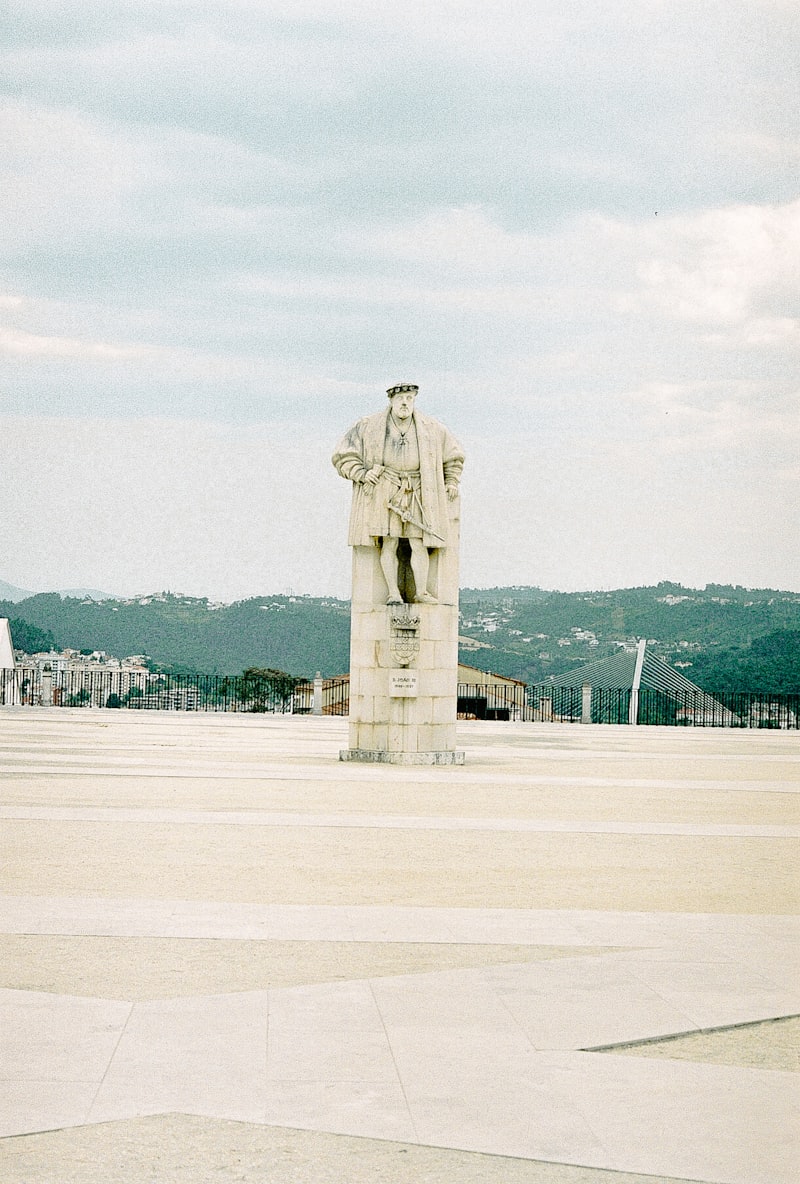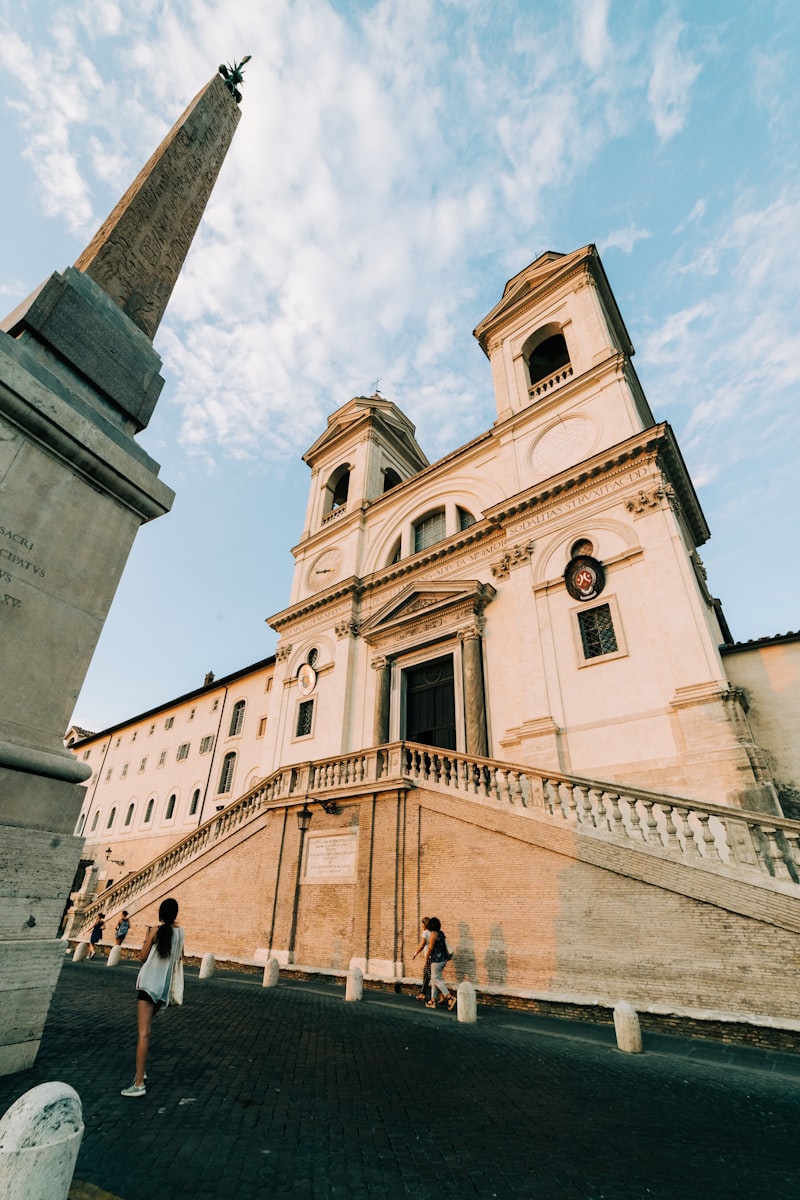Have you ever wondered about the grandeur of European national monuments? These iconic structures stand as testaments to history, culture, and architectural brilliance across the continent. From the majestic Eiffel Tower in Paris to the historic Acropolis in Athens, each monument tells a unique story that captivates visitors from around the globe.
Imagine standing beneath the towering Eiffel Tower, its intricate iron lattice soaring into the Parisian sky. Built for the 1889 World’s Fair, this iconic symbol of France has become synonymous with romance and elegance, offering breathtaking views of the city below.
On the shores of the Bosphorus, the Hagia Sophia in Istanbul stands as a marvel of Byzantine architecture. Originally constructed as a cathedral in the 6th century, it later became a mosque and is now a museum, showcasing stunning mosaics and towering domes that echo centuries of cultural exchange.
In the heart of Rome, the Colosseum stands as a testament to the engineering genius of ancient Rome. This amphitheater once hosted gladiatorial contests and grand spectacles for crowds of up to 80,000 people. Today, it remains a symbol of the city’s rich history and is a must-visit for tourists seeking a glimpse into the past.
Traveling north to London, the Tower Bridge spans the River Thames with its iconic twin towers and drawbridge mechanism. A symbol of Victorian engineering, this bridge has become an integral part of London’s skyline and offers panoramic views of the city from its elevated walkways.
From the picturesque Neuschwanstein Castle in Germany to the historic Charles Bridge in Prague, European national monuments continue to inspire awe and admiration. Each one tells a story of craftsmanship, cultural heritage, and the enduring spirit of human creativity. Discover these architectural marvels firsthand and immerse yourself in the rich tapestry of Europe’s history and culture.
Iconic Beauty Unveiled: Europe’s Most Captivating National Monuments
Among these, the Eiffel Tower in Paris reigns supreme, a towering symbol of France’s artistic prowess and engineering marvel. Its intricate lattice work and commanding presence against the Parisian skyline make it an unparalleled icon of modern architecture.
Moving eastward, the Colosseum in Rome stands as a testament to ancient Roman ingenuity and the grandeur of gladiatorial combat. This amphitheater, with its imposing facade and history steeped in blood and valor, continues to draw millions of visitors yearly, each enthralled by its sheer magnitude and historical importance.
Venturing north to London, the Tower Bridge proudly spans the River Thames, blending Victorian Gothic and modern engineering. Its majestic towers and drawbridge evoke a sense of London’s industrious past and serve as a vital link between the city’s bustling districts.
Further east, in Istanbul, the Hagia Sophia stands as a masterpiece of Byzantine architecture turned into an imperial mosque and now a museum. Its massive dome and intricate mosaics tell tales of empires and religions, offering a glimpse into the city’s tumultuous yet vibrant history.
In Barcelona, the Sagrada Familia defies architectural norms with its unconventional design by Antoni Gaudí. This basilica, still under construction after more than a century, combines Gothic elements with Gaudí’s unique style, creating a surreal and awe-inspiring monument.

Lastly, in Athens, the Parthenon atop the Acropolis remains a symbol of ancient Greek civilization’s apex. Dedicated to Athena, the goddess of wisdom, this temple’s Doric columns and sculptural friezes epitomize classical Greek ideals of beauty and harmony.
Journey Through History: Europe’s Top National Monuments You Must See
Imagine standing before the majestic Colosseum in Rome, where gladiators once battled amidst roaring crowds. This iconic amphitheater, a testament to Roman engineering prowess, invites you to ponder upon the spectacle of ancient games and the echoes of cheers that reverberated through its walls centuries ago.
Moving northward, the Eiffel Tower in Paris emerges as a symbol of modernity and architectural splendor. As you ascend its wrought-iron lattice structure, Paris unfolds beneath your feet like a canvas painted with the city’s romance and artistic flair. The tower’s silhouette against the Parisian skyline at dusk evokes a sense of wonder and admiration for human ingenuity.
Traveling to London, the Tower of London stands stoically along the River Thames, guarding centuries of British history within its walls. Once a royal palace, fortress, and prison, it now houses the Crown Jewels, whispering tales of intrigue, royal ceremonies, and daring escapes.

Further east lies the Acropolis of Athens, where the Parthenon reigns supreme atop the hill, dedicated to Athena, the goddess of wisdom. This architectural marvel, adorned with intricate sculptures and friezes, epitomizes ancient Greek civilization’s cultural and philosophical zenith.
In the heart of Istanbul, the Hagia Sophia beckons with its Byzantine and Ottoman architectural fusion, showcasing a blend of religious and cultural heritage. Originally a Christian cathedral, later transformed into a mosque and now a museum, its domed grandeur continues to mesmerize visitors from around the globe.
Finally, venturing to Krakow in Poland, Wawel Castle perches atop Wawel Hill, overlooking the Vistula River. This royal residence and the adjacent cathedral symbolize Poland’s monarchic legacy and serve as a repository of national treasures and artistic masterpieces.
Each of these national monuments is more than just a structure; they are living witnesses to the triumphs, tragedies, and transformations that have shaped Europe’s cultural landscape. They invite you to embark on a journey through time, where history isn’t merely read but experienced through the awe-inspiring architecture and the stories etched in every stone and sculpture.
Architectural Wonders: Discovering Europe’s Magnificent National Monuments
Travel to Rome, and you’ll encounter the timeless beauty of the Colosseum, an ancient amphitheater that once hosted gladiatorial contests and theatrical performances. Its imposing arches and storied past evoke a sense of wonder about the lives and events that unfolded within its walls centuries ago.
Further east, in Istanbul, the Hagia Sophia stands as a testament to Byzantine and Ottoman architectural genius. Originally built as a cathedral in the 6th century, it later became a mosque and is now a museum, showcasing stunning mosaics and a massive dome that seems to defy the heavens.
Crossing the Channel to London, the Tower Bridge stands proudly over the River Thames, its iconic twin towers and drawbridge a symbol of Victorian engineering marvels. It’s not just a bridge but a cultural icon that lights up the London skyline, captivating millions of visitors each year.
In Barcelona, Antoni Gaudí’s Sagrada Família continues to astound with its intricate facades and towering spires. This basilica, still under construction after more than a century, blends Gothic and Art Nouveau styles in a breathtaking display of creativity and devotion.
Europe’s Hidden Gems: Unveiling the Secrets of National Monuments
Have you ever wondered about the hidden stories behind Europe’s national monuments? Beyond the bustling cities and famous landmarks, lie treasures that whisper tales of history and culture. These national monuments, scattered across the continent, hold secrets that are waiting to be discovered.
Imagine standing before a centuries-old castle perched on a cliff, its weathered stones echoing with the footsteps of generations past. Each tower and battlement tells a story of knights and noble families, of battles fought and alliances forged. These castles, such as Neuschwanstein in Germany or Český Krumlov in the Czech Republic, offer not just a glimpse into the medieval era but a journey through time itself.
Venture into the heart of Europe and you’ll find hidden gems like Plitvice Lakes National Park in Croatia, where emerald lakes cascade into each other through a series of breathtaking waterfalls. The park, a UNESCO World Heritage site, is a testament to nature’s artistry and a haven for wildlife enthusiasts and photographers alike.
Or travel to lesser-known corners such as Sintra in Portugal, where the Palácio Nacional da Pena emerges like a fairytale castle from the misty forests of the Serra de Sintra. Its vibrant colors and eclectic architecture blend Moorish, Gothic, and Renaissance styles, creating a whimsical panorama that captivates visitors from around the globe.
In Greece, the ancient ruins of Delphi offer a glimpse into the spiritual heart of the classical world. Set against a backdrop of rugged mountains, the sanctuary of Apollo and the theatre of Delphi evoke the mystique of ancient oracles and the enduring legacy of Greek civilization.
Europe’s national monuments are not just relics of the past; they are living testaments to the resilience of cultures and the beauty of human creativity. Whether you’re drawn to the grandeur of palaces or the tranquility of natural wonders, each monument has a story to tell and a legacy to impart.
Explore these hidden gems, unearth their secrets, and immerse yourself in the richness of Europe’s heritage. From majestic castles to pristine landscapes, each discovery promises an unforgettable journey through history and wonder.
From Paris to Prague: Europe’s Must-Visit National Monuments
Europe, a continent steeped in history and culture, boasts an array of national monuments that beckon travelers from around the globe. Whether you’re wandering through the romantic streets of Paris or exploring the medieval charm of Prague, these iconic landmarks stand as testaments to Europe’s rich heritage.
In Paris, the Eiffel Tower reigns supreme as one of the most recognized symbols of France and indeed, Europe itself. Its wrought iron lattice structure, originally built as a temporary exhibit for the 1889 World’s Fair, now attracts millions annually with its breathtaking views and timeless allure.
Moving eastward, Prague Castle in the heart of the Czech capital enchants visitors with its sprawling complex of palaces, churches, and gardens. Dating back to the 9th century, this UNESCO World Heritage site not only offers a glimpse into Czech history but also commands panoramic views of the city below.
Further south, Rome’s Colosseum stands as a testament to the grandeur of ancient Rome. This iconic amphitheater, where gladiators once battled, draws visitors who marvel at its architectural brilliance and ponder its storied past.
Meanwhile, in London, the Tower Bridge spans the River Thames in majestic fashion. Its Victorian Gothic style and twin towers have become synonymous with the city’s skyline, offering a blend of history and engineering marvel.
Venturing north, Edinburgh Castle perched atop Castle Rock in Scotland overlooks the capital city with regal authority. Dating back to the 12th century, it serves as a reminder of Scotland’s turbulent past and hosts the iconic Royal Edinburgh Military Tattoo annually.
Across the Mediterranean, the Acropolis of Athens reigns over the Greek capital with its ancient temples dedicated to the gods. The Parthenon, an enduring symbol of classical Greece, captivates visitors with its Doric columns and mythological significance.
Historical Splendor: Europe’s Most Breathtaking National Monuments
Imagine standing before the majestic Colosseum in Rome, Italy, where ancient gladiators once battled for glory. This iconic amphitheater, a symbol of Roman engineering prowess, invites you to step back in time and envision the grandeur of ancient spectacles. Its colossal structure and intricate arches are a testament to Rome’s imperial past, making it a must-visit for history enthusiasts.
Across the Mediterranean, in Athens, Greece, the Parthenon stands proudly atop the Acropolis, a symbol of classical architecture and the pinnacle of ancient Greek achievement. Dedicated to the goddess Athena, this temple exudes timeless elegance with its Doric columns and intricate friezes. As you stand beneath its towering columns, you can’t help but marvel at the ingenuity of ancient Greek architects.
Traveling north to France, the Palace of Versailles reigns supreme as a masterpiece of Baroque architecture. Once a hunting lodge, it was transformed by Louis XIV into a lavish palace that became the seat of French power. The opulent Hall of Mirrors, adorned with sparkling chandeliers and gilt-edged mirrors, reflects the palace’s grandeur and the extravagance of the French monarchy.
Venturing eastward, Prague Castle in the Czech Republic looms over the cityscape, its spires and towers a testament to centuries of architectural evolution. This sprawling complex, encompassing churches, palaces, and gardens, has witnessed the rise and fall of kings and emperors, offering visitors a glimpse into Central Europe’s tumultuous history.
In Spain, the Alhambra in Granada stands as a testament to Moorish architecture’s exquisite beauty. Its intricate stucco work, serene courtyards, and tranquil water features transport you to medieval Islamic Spain, a time when art, science, and culture flourished under the Nasrid dynasty.
Frequently Asked Questions
Which European national monuments are UNESCO World Heritage Sites
FAQ description: Discover which European national monuments hold UNESCO World Heritage Site status. Find concise information on iconic sites recognized for their cultural or natural significance across Europe.
What are the most iconic national monuments in Europe
Explore Europe’s iconic national monuments with our concise guide. Discover must-visit landmarks like the Eiffel Tower, Colosseum, and Acropolis, each steeped in history and architectural splendor.
What historical significance do European national monuments hold
Learn about the historical significance of European national monuments, exploring their cultural, political, and symbolic roles in commemorating pivotal events, influential figures, and national identity.
How can I visit famous European national landmarks
Learn how to visit iconic European national landmarks efficiently with our concise guide. Discover essential travel tips, transportation options, and must-see attractions to make the most of your journey.
How do I learn about the architecture of European national landmarks
Discover the architectural heritage of Europe’s national landmarks with our concise guide. Learn about iconic structures, historical significance, and architectural styles that define each nation’s cultural landscape.



